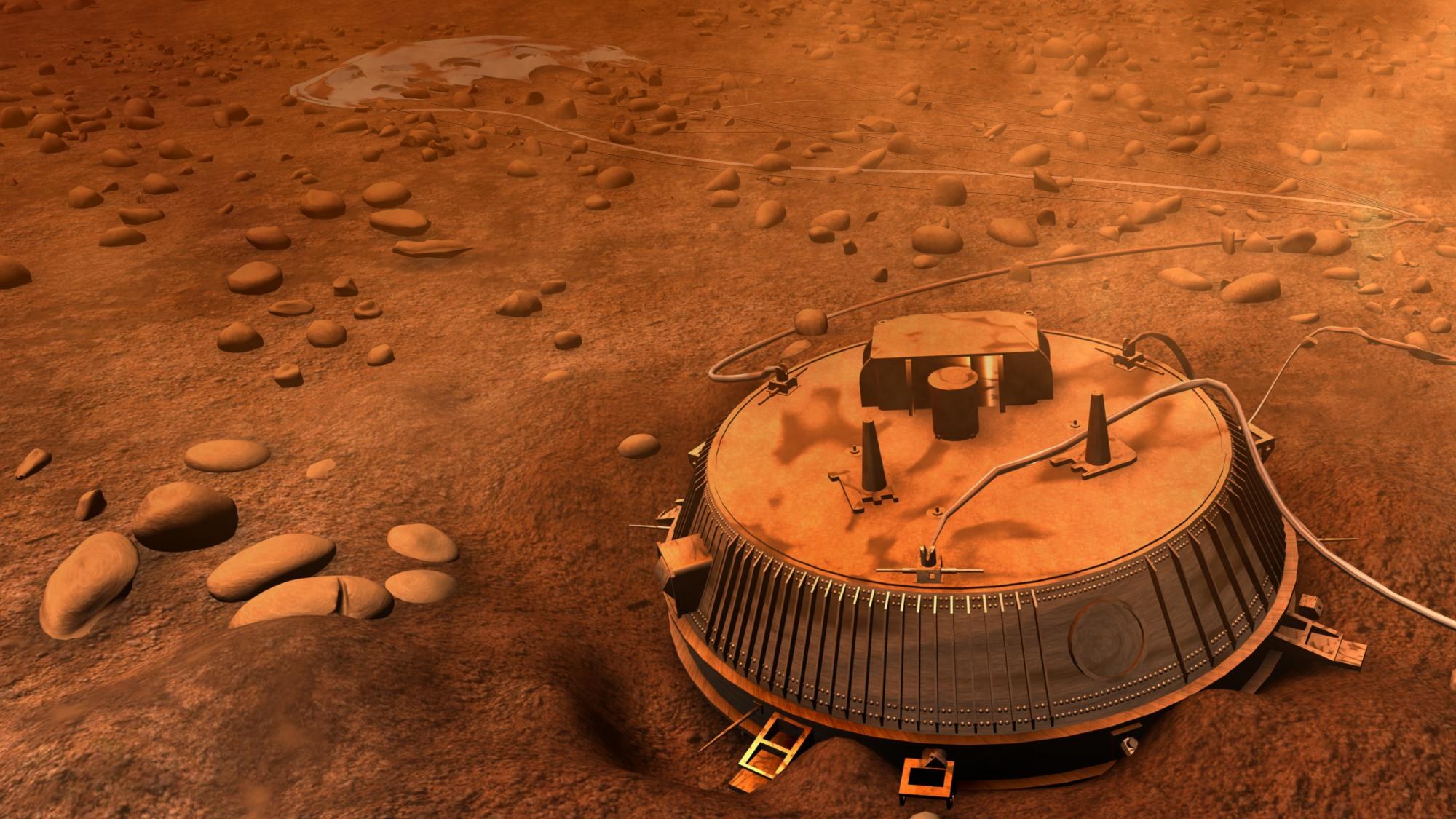On 14 January 2005 the Huygens atmospheric capsule landed on Saturn's moon Titan
On 14 January 2005 the Huygens atmospheric capsule landed on Saturn's moon Titan
One of the most exciting experiments in researching the Solar System with robotic space probes took place on 14 January 2005, when the European measurement capsule Huygens made a two-and-a-half hour flight through Titan's atmosphere and subsequently landed on the icy surface of the moon. The picture is an artist's impression of the landing site.
A mechanism ejected Huygens from the NASA Saturn orbiter Cassini on 24 December 2004. Huygens started a three-week 'ballistic' – that is, not using a propulsion system – descent towards Titan. When Huygens got to the outer reaches of the dense nitrogen atmosphere, the atmosphere of the moon slowed down the probe. In the course of this deceleration, the protective shield of the capsule was heated to 1,500 degrees Celsius. One hundred and eighty kilometres above the surface, the first, two-and-a-half-metre diameter parachute pulled off the heat shield as planned. Immediately afterwards, a second parachute, with a diameter of more than eight metres, opened so that Huygens’ fall was further slowed and the capsule – now a plaything of Titan’s winds – floated through the atmosphere. The probe collected and analysed its first samples of the atmosphere and started acquiring images. The second parachute was released at a height of 125 kilometres. A third parachute allowed the probe to float downwards through the clouds. On 14 January 2005 at 12:38 Central European Time, Huygens landed on the surface of Titan, which is at a temperature of minus 180 degree Celsius.
The measurement data and images from the landing site were first transmitted to Cassini and from there to Earth. Rounded ice blocks are visible which were presumably ground down by a flowing medium. After a few hours, the radio signals from a scientifically and technically magnificent mission ceased as expected.

